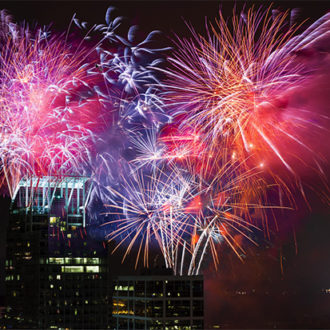The Photographer's Lighting Handbook: The Prime Variable
Photography means “light writing.” Without light, a photograph is literally a black nothing. Lighting has two parts: illuminating a subject to show it according to the photographer’s vision, and recording that light so it can be reproduced with detail in the highlights and shadows. Art and aesthetics aside, that’s really all there is to photography. Master these two parts and you’ve got the chops to photograph anything.
To photograph effectively, you have to be in control. A camera, no matter how extraordinary its programming, simply isn’t capable by itself. Photography entered the age of almost total automation in the decade and a half before film became an alternative method for recording light. Cameras today have inherited these systems and refined them toan astonishing degree. Unfortunately, for all the sophistication of the algorithms powering their automation, a camera is only able to realize a photographer’s intention when it’s told what to record. At first glance, that means pointing the camera at the subject, pressing the button, then trusting the camera to get all of the variables—aperture, shutter speed, ISO, white balance, metering, and focus—close enough to correct to capture the image in the viewfinder. Point and shoot (auto-variable resolution) works pretty well in a lot of circumstances, but on the rest, it’s a bust. Especially with my favorite light, electronic flash.
“The Photographer’s Lighting Handbook” is dedicated to methods of resolving these variables so the camera produces the expected image. A premise of the “Handbook” is that the reader understands the functions of ISO, aperture, and shutter speed and the relationship they share with each other.
Exposure—
The Prime Variable
In algebra class, the goal was to solve for “X.” I want to admit right here that while I never flunked algebra, I did take it three times while attending university, seeking a basic understanding that always eluded me. Thankfully, photography is not algebra. Photography’s “X” is the exposure set on the camera. Everything else lighting-wise is a creative decision serving the exposure. No algebra required. Style? Yep. Composition? Uh huh. Vision? Absolutely!Arithmetic? Yes. Algebra? No.
Exposure is the amount of light required by the sensor to record the true tonality of a subject. Once that’s set on the camera, all the other variables—contrast, edge light, background light, hair light, and so forth—are creative decisions.
MeasuringLight—
Incident or Reflective?
Exposures set by the camera are made with a reflective meter. That meter will deliver a reading that will make whatever the camera sees 12.5% gray. Aim the camera at a white wall, take the reading, take the picture, and what do you get? Yep, a gray wall. Point it at a black wall, set the light, make a photo, and what happens? Gray wall. So the only color wall that will record properly without exposure compensation is a 12.5% gray wall. Then there’s the question of how much compensation will make the wall white or black.
In this example, the red circles show where each reflected meter reading was made. The white patch gives an underexposed reading, while the black one requires more light to make it 12.5% gray, resulting in overexposure. The reading from the gray patch on the ColorChecker chart results in a correct exposure.
Incident meters have the white dome. An incident reading measures the light falling on the subject. Reflective meters tell how much light a subject returns to the camera after being lit. A scene whose light is measured with an incident meter will deliver the true tone of the subject no matter how much light it reflects or absorbs. (Think white wall reflects, black wall absorbs, or reflects significantly less light.) To make the reading, position the meter where the subject is and point the dome at the source of illumination. Set this reading on the camera.
Prime Variable Relativity
The brightness of all of the other lights for a photo serves the exposure set on the camera. This photograph of Factor Atlanta model Dana is lit with a single 22″ beauty dish. She’s standing in front of a white wall. The light measured with an incident meter pointing at the beauty dish at ISO 100 is 1/125 at f/8. That’s the exposure set on the camera. A reflective meter reading of the white wall behind her is also 1/125 at f/8. Because that reading is the same as the exposure set on the camera, the white wall renders 12.5% gray.
I wanted a darker background to bring Dana forward in the frame. The only change between this version and the previous one is a flag blocking the light hitting the white wall. The exposure on the camera at ISO 100 is still 1/125 at f/8. A reflective reading on the background now reads 1/125 at f/2.8, or three stops darker than the exposure on the camera. The reflectance of the background is 1.5%.
Next time, “The Photographer’s Lighting Handbook” explores the rest of the reflectance story. Until then, light well and prosper!
For more training, KelbyOne offers great courses like this one on PremierePro, and Camera Basics (we have tons, this is a link to just one – search for your camera!). And of course expert classes on lighting. Check out some of the live on tour classes we have in your neighborhood.




